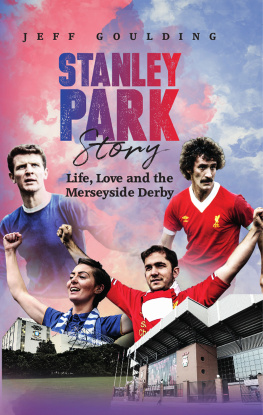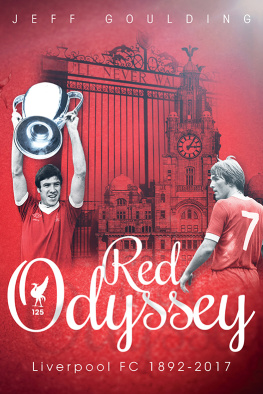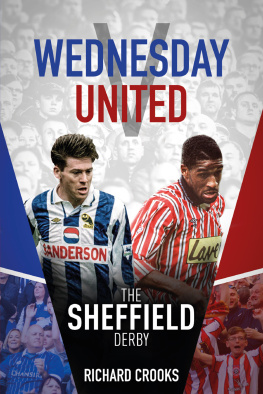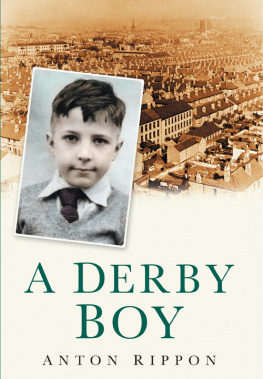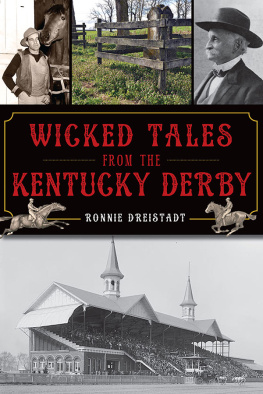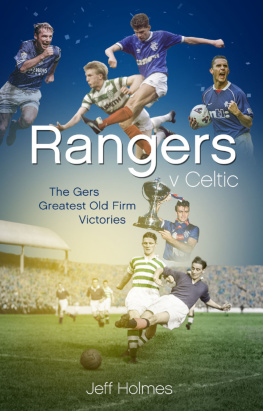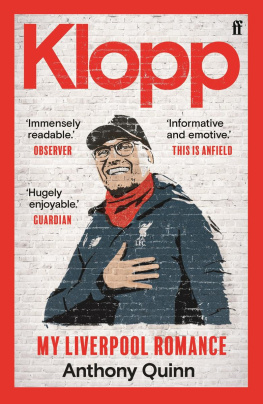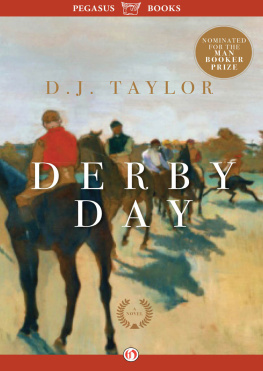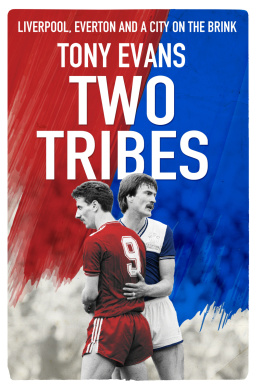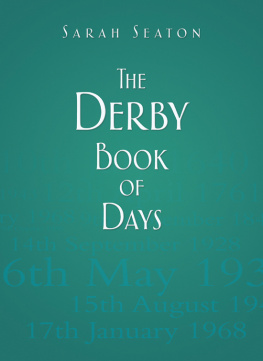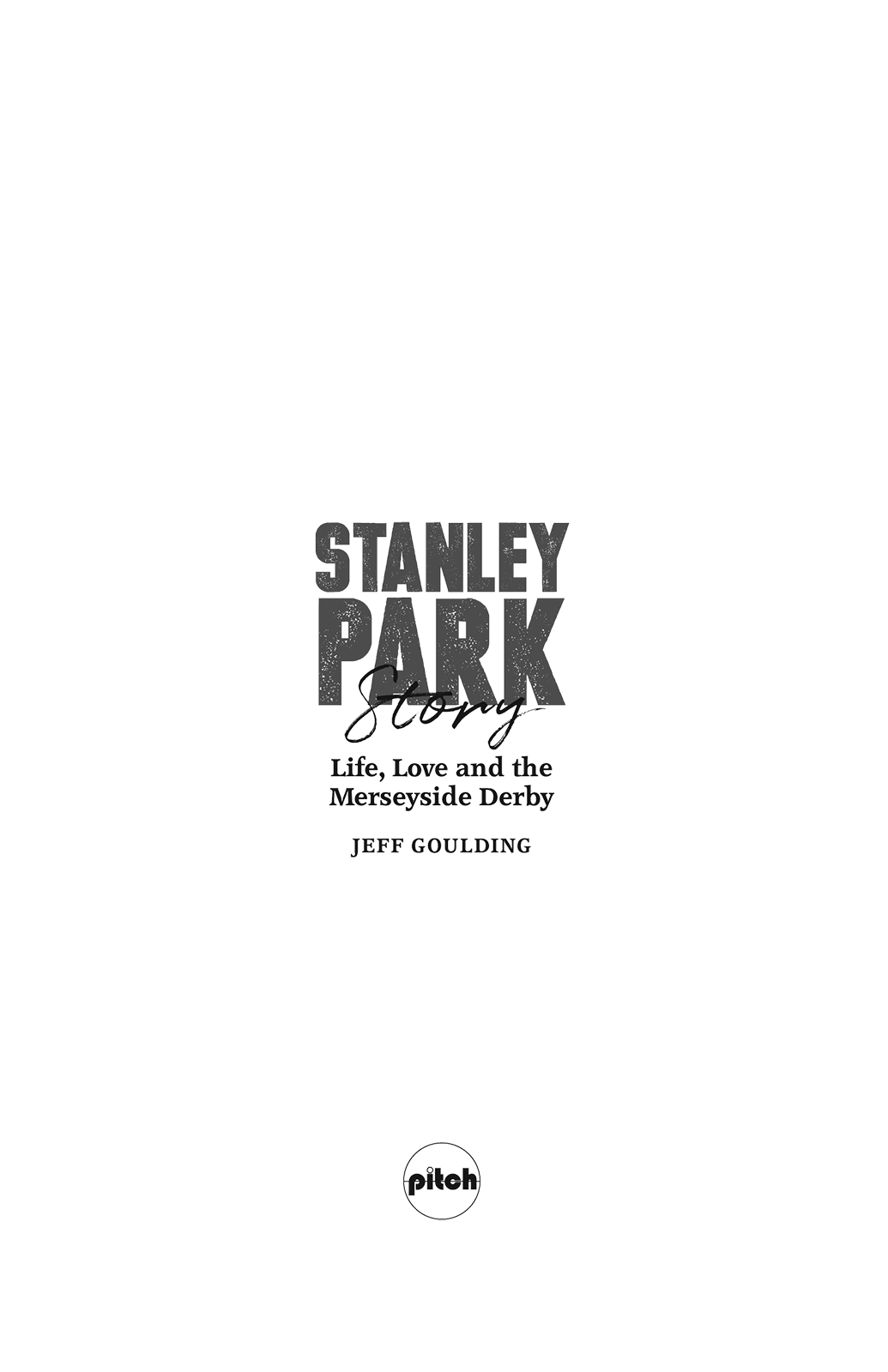First published by Pitch Publishing, 2018
Pitch Publishing
A2 Yeoman Gate
Yeoman Way
Durrington
BN13 3QZ
www.pitchpublishing.co.uk
Jeff Goulding, 2018
All rights reserved under International and Pan-American Copyright Conventions. By payment of the required fees, you have been granted the non-exclusive, non-transferable right to access and read the text of this e-book on-screen. No part of this text may be reproduced, transmitted, downloaded, decompiled, reverse-engineered, or stored in or introduced into any information storage and retrieval system, in any form or by any means, whether electronic or mechanical, now known or hereinafter invented, without the express written permission of the Publisher.
A CIP catalogue record is available for this book from the British Library
Print ISBN 978-1-78531-449-0
eBook ISBN 978-1-78531-483-4
--
Ebook Conversion by www.eBookPartnership.com
Contents
For Angela, my wife, and the Blue in my life, who reminds me that though we follow two different clubs we are one family, sharing one love.
Acknowledgements
In creating this book, I am grateful to many people, whose collective experiences and viewpoints have added a depth and authenticity that I couldnt have achieved on my own. When I set out to write Stanley Park Story, I wanted to ensure that the voices of both sides of the Mersey divide were heard.
As a die-hard Liverpudlian, I couldnt have done that without the help and support of many Evertonians. I hope I have done them justice.
So, to Harry and John Colquhoun, Frank and Yvon Wardale, Kevin Dooley and Mick Myers, thank you for your stories and for systematically removing much of the Red-tinted bias from the book. Thanks also to Billy and Joe Goulding, Ian Golder, John Stulberg, Tony Lanigan and Keith Williams, for ensuring I didnt remove too much Red-tinted bias.
I have strived to bring to life long-forgotten details from some of the greatest games, capturing the drama on and off the field. I have drawn on many sources and would like to pay special tribute to several people and groups.
Amgrimur Baldursson and the teams at lfchistory.net, anfieldonline.com, evertonresults.com and toffeeweb.com have compiled amazingly comprehensive records for no other reason than their love of Liverpool and Everton. I salute you all.
Id also like to acknowledge the support of some great football writers whose encouragement has been critical to my journey as an author. So, thank you to Matt Ladson, Max Munton, Dave Usher, Neil Poole and Steven Scragg. If you hadnt given me a vehicle for my writing and supported me, then I would never have had the confidence to write one book, let alone two.
Finally, Id like to remember Steve Evans, one of my best friends and a great Liverpudlian. Steve, your legend lives on in these pages.
Foreword
In the spring of 1892, on the banks of the Mersey, a brand-new football club was born. Boardroom strife and a row about the rent had led to Everton Football Club fracturing in two. Out of the debris, Liverpool Football Club was formed and would take up residence on Anfield Road. Everton, Anfields original occupants, moved out and set up camp at nearby Goodison Park. Only the 45 hectares of parkland, known as Stanley Park, separated these two fierce rivals.
The two protagonists driving the split were accountant George Mahon, the son of Irish immigrants, and John Houlding, a local brewer and politician. They would have had little idea that they were setting in motion a chain of events that would eventually see the football clubs of Liverpool become the most successful in England.
The two clubs have amassed 61 major honours in 126 years of football. No other city comes close. During that time huge social and political upheaval has taken place. The clubs have survived two world wars, economic turmoil and the city they represent has fought its own battles. Through all of that their great rivalry has endured.
Those who support Everton and Liverpool are a people whose DNA can be traced to all four corners of the globe. Liverpool is a truly international city. Its large Irish population brought with it sectarian divisions, but the city has put that aside. The great political struggles down the years have shaped Merseyside into a strongly working-class region, with a socialist outlook.
Merseyside has had its issues with race, but as a people, Scousers reject prejudice and have fought fascism at home and abroad. When the far-right English Defence League attempted a march in the city, they were forced to cower in a lost-luggage room before being driven out of town. Today the only fault lines on Merseyside are football ones.
Stanley Park Story is a collection of facts, personal stories, experiences and a whiff of poetic licence. It charts the recent history of this historic rivalry. It is not an autobiography. The characters and other elements of the story are fictionalised. Any resemblance to actual people, living or dead is entirely coincidental.
It is, though, a tale of one city, two families and three generations of Liverpudlians and Evertonians. We will view the whole story through their eyes.
We join the story in 1962, when Liverpool were promoted to the First Division, after an absence of eight years. The Blues had also spent some time in the second tier from 195154, which meant that Scousers had gone 11 years without a league derby. They have enjoyed at least two every year since. This is now the longest continuous football derby in English football.
As a people, Scousers tend to be anti-establishment and anticlich. So, in this story, there will be tales of conflict and solidarity but no talk of friendly derbies. Our story is a complex one and the relationship between us waxes and wanes, just like the fortunes of our teams.
The antipathy felt by Blues towards their neighbours after English teams were banned from Europe, in the aftermath of the Heysel Stadium disaster, did not prevent them rallying in support of their Scouse brothers and sisters after the tragedy at Hillsborough, for example.
Like any sibling rivalry, this is a lovehate relationship. We can be brutally critical of each other, but let no outsider come between us. When we need to we can be united and strong in defence of the other, and in the next breath rejoice in our neighbours misfortune. This is a unique rivalry.
Well explore all of that, through the lives of Tommy Gardener, a Red, Jimmy Harrington, a Blue, and their families. Tommy will narrate a tale of romance, drama, tragedy and comedy. This is our Stanley Park Story of life, love and the Merseyside derby.
Enjoy.
Introduction
Jimmy Harrington was my best mate and my worst enemy. He was a Blue and I am Red. We came together in 1962, and, for a time, we were inseparable. We loved football and we saw it all. League titles, cup finals and European adventures all came our way. We witnessed glory most supporters never see, and we shared in all of it, as comrades.
Sadly, though, like all great friendships, ours was tested, and ultimately broken, for a time. Thats part of the story too. Its also part of the history of our two teams. They, too, were once brothers in arms but theyve become enemies on occasion. Yet when the chips are down, they find a way back, just like Jimmy and me.
Im Tommy Gardener. Im in my 70s now. Ive lost Jimmy, but the memories of our friendship and the great games and moments we shared burn brightly in my minds eye. I want to share all that history with you: the drama on and off the field. More than that, I want you to see the stuff that pictures, film and the record books will never show you.

